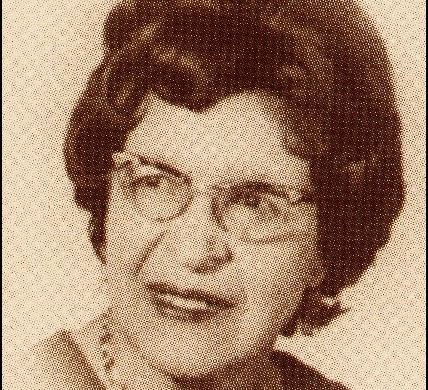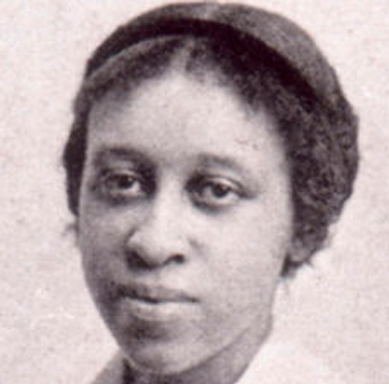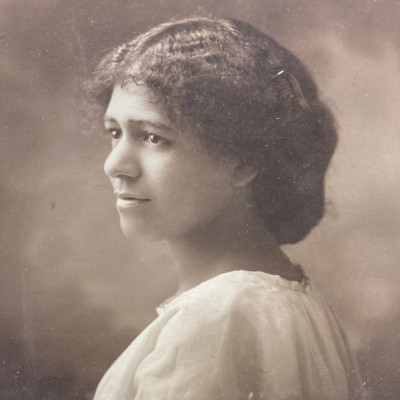“If you bulldoze your heritage, you become just anywhere,” have become the most repeated words of Sarah R. Delano (1904-1994). Throughout her presidency of the Waterfront Historic Area LeaguE (WHALE), bulldozing was usually averted, and New Bedford kept its historic heart.
Thanks to Sarah Delano (1904-1994), New Bedford is not “just anywhere.” She led historic preservation of New Bedford’s Waterfront District at a time when other forces may have erased its legacy. “If you bulldoze your heritage, you become just anywhere,” have become Sarah’s most repeated words. Through her leadership, bulldozing was usually averted, and New Bedford kept its heart.
Sarah was born Sarah Rodman Scudder in Chicago in 1904, but she summered in the area to visit her grandmother, Mrs. Frederick Swift, the former Sarah Rotch and daughter of William J. Rotch, Jr. Her grandmother Sarah had been raised in the James Arnold House (now the Wamsutta Club) and owned a cottage in nearby Nonquitt in South Dartmouth. During these summer visits, Sarah Delano came to know and love New Bedford. While attending Vassar College, she met Lt. Francis John Clark at West Point. The couple married and had a daughter Pauline. In 1932, several years after graduating from Vassar College in 1925, Sarah married New Bedford artist Clifford Ashley. Sarah and Clifford restored a Westport farmhouse and had two daughters, Phoebe and Jane. During her marriage to Clifford, Sarah’s interest in local architecture grew.
In 1951, Sarah married New Bedford native Stephen C. L. Delano, one of the founders of the Historic Area Committee that would eventually become the Waterfront Historic Area LeaguE (WHALE). WHALE officially formed in 1962 with a mission “to foster historic preservation and continued use of the city’s architectural heritage, so to balance community and economic vitality in New Bedford.” New Bedford had lost its whaling and textile industries, and perhaps New Bedford’s last hope was WHALE’s focus–rehabilitation of the waterfront.
When Steven was WHALE’s vice president and next in line to be president, he recommended instead passionate and purpose-driven Sarah for the job. In 1966, Sarah became WHALE’s president, for 16 years through 1982. Sarah led WHALE’s preservation efforts with intuition, courage and grace. During her first years as president, WHALE tried to preserve and restore the Waterfront District before other groups could demolish and rebuild there. One of the most serious challenges was the positioning of the new Route 18 in the early 1970s. Although WHALE convinced the New Bedford Redevelopment Authority to alter the original plan that would have run through the Benjamin Rodman House and the Customs House, the revised highway plan still went through the Rotch Counting House and WHALE was unable to save it. In 1977, WHALE’s completely restored Macomber-Sylvia Building, on the corner of Union Street and Johnny Cake Hill, was destroyed in gas explosions that rocked the Historic District. Despite these and other setbacks, Sarah and WHALE remained committed to preservation through research, grant writing, fund raising, lobbying and most importantly, risk taking. Sarah reflected, “If the Waterfront District had been torn down, New Bedford wouldn’t be New Bedford. It would have lost its heart.” By 1978, WHALE’s list of saved buildings included the Double Bank Building, the Rodman Candleworks, and the Sundial Building. Under Sarah’s leadership, the Waterfront Historic District, lined with cobblestone streets and period lighting, became a National Historic Landmark on its way to becoming the New Bedford Whaling National Historical Park.
Sarah steered WHALE through the process of saving a deteriorating vaudevillian theater from demolition, restoring it to its original grandeur, and transforming it into a performing arts center, the Zeiterion. In 1982, backed by Sarah’s belief in the power of volunteering, an unpaid group began the theater restoration by tearing down wood paneling, pulling out carpet, salvaging seats, cleaning and painting. Sarah and John Bullard worked as an inseparable team, despite doubts from some, to raise funds and receive grants. Professional restoration followed, and on September 15, 1982, the Zeiterion Theatre opened with a sold-out Shirley Jones concert. Former mayor John Bullard has said, “Sarah Delano had more foresight and courage in her frail, elderly body than 20 CEOs you could find in any Chamber of Commerce meeting.” In 1986, Sarah received the Zeiterion Theatre Achievement Award for her commitment to seeing the Zeiterion Theatre saved and turned into a performing arts center. Her funeral services were held there in 1994. Its lobby was dedicated to Sarah in 1999. The Zeiterion Theatre continues to bring the best in performing arts to the local community and its school systems.
Toward the end of her WHALE presidency, in the middle of the Zeiterion restoration, Sarah directed another important save, an endangered whaling mansion on County Street, the William Rotch Jr. House. A buyer was ready to turn the house into an inn, restaurant and parking lot, but a variance was needed. Sarah convinced others that the mansion needed to be preserved and that only WHALE could do it. In a packed city hall, Sarah announced that WHALE would buy the house. Local historian Peggi Medeiros recalls, “Sarah did more to save the house than anyone else and oversaw every detail of its restoration and establishment. I was there at the time and was lucky enough to work with her.” Through WHALE, the William Rotch Jr. House became the Rotch-Jones-Duff House & Garden Museum, a Greek Revival mansion with grounds that documents the lives of three families that occupied it.
Sarah’s influence extends beyond the city of New Bedford. The Sarah R. Delano Preservation Awards are given annually by WHALE to individuals or groups “that have made outstanding contributions to the rehabilitation, restoration and interpretation of the historic character and environment of Greater New Bedford.” In 1985, in memory of her late husband, Sarah donated the Stephen C. L. Delano Memorial Forest, 110 acres of woodland in Rochester, MA to the Wildlands Trust to preserve the town’s rural landscape and biodiversity. A two-mile loop trail passes woodland swamps, red maples, white pines, holly, winterberry, sassafras and blueberries. Sarah’s Rock, a symbol of who she was for so many, is a stop on the trail.
Ann O’Leary, Emily Bourne Research Fellow
Information from
-
Leader, Melinda. “Dedication Honors Zeiterion’s Savior.” SouthCoast Today, 11 Oct. 1999, www.southcoasttoday.com/article/19991011/News/310119999.
-
McCabe, Marsha, and Joseph D. Thomas. Not Just Anywhere: The Story of WHALE and the Rescue of New Bedford’s Waterfront Historic District. Spinner Publications, 1995.
-
Medeiros, Peggi. New Bedford Mansions: Historic Tales of County Street. The History Press, 2015.
-
“Stephen C.L. Delano Memorial Forest – Rochester, MA.” Wildlands Trust, The Wildlands Trust, 2016, www.wildlandstrust.org/stephen-cl-delano-memorial-forest/.
-
Urbon, Steve. “Thanks for Z Memories.” SouthCoast Today, 19 May 2006, www.southcoasttoday.com/article/20060519/News/305199996.
![[Sarah R. Delano], 1966, Photograph, Courtesy of The Rotch-Jones-Duff House & Garden Museum Photograph of Sarah R. Delano - a headshot of a woman with pulled black black and grey hair, smiling to the right side](https://historicwomensouthcoast.org/wp-content/uploads/2018/02/Sarah-Ashley-Delano-.jpg)




